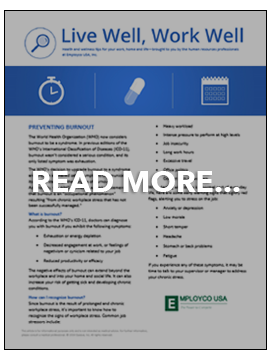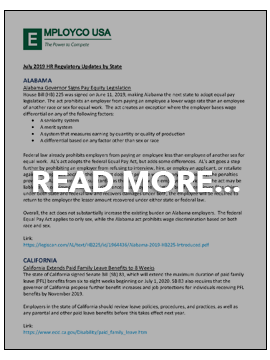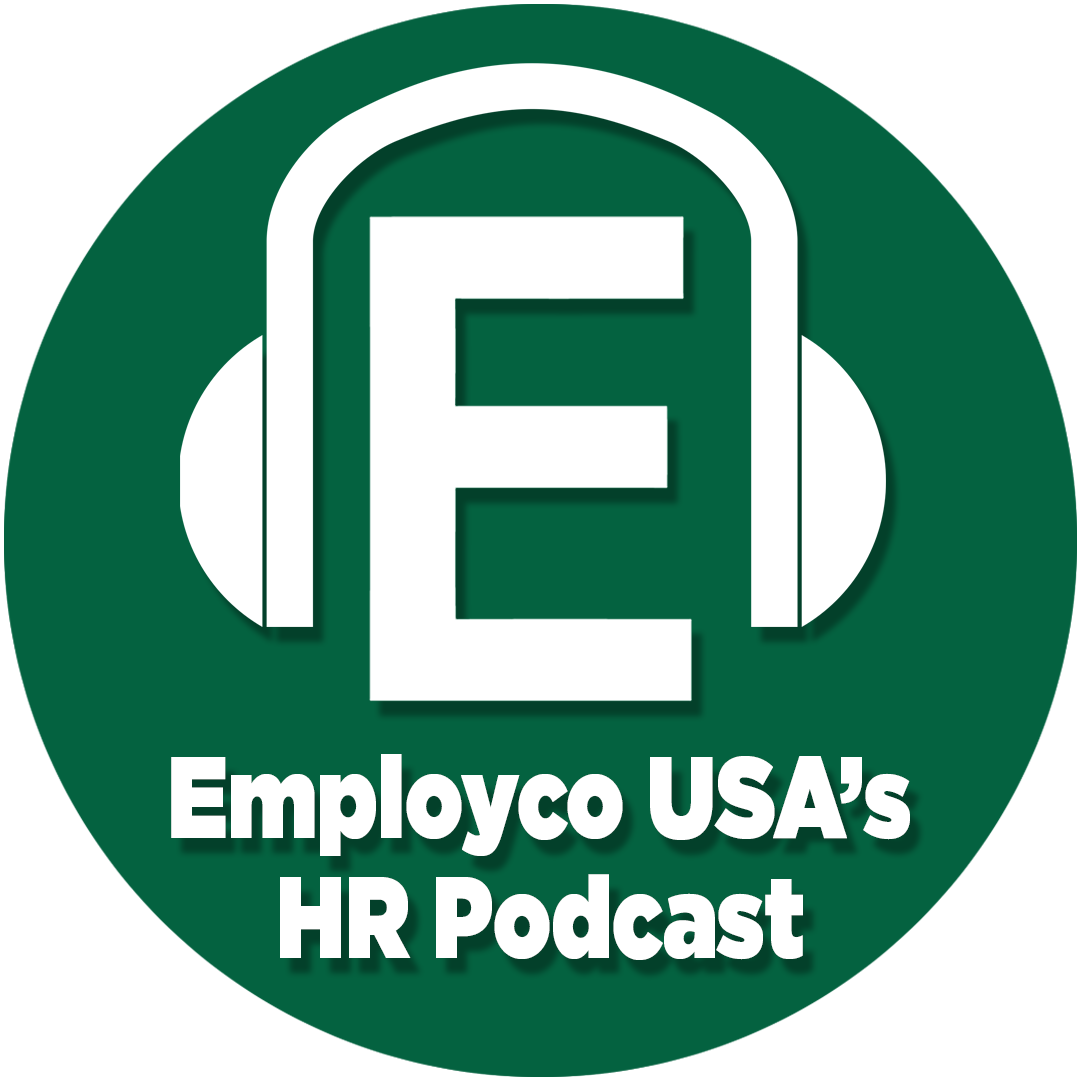| PREVENTING EMPLOYEE BURNOUT |
|
|

|
|
|
The World Health Organization (WHO) now considers burnout to be a syndrome. In previous editions of the WHO’s International Classification of Diseases (ICD-11), burnout wasn’t considered a serious condition, and its only listed symptom was exhaustion. The WHO’s decision to upgrade burnout to a syndrome and provide a detailed set of symptoms communicates its serious stance on the dangers of burnout. Additionally, the WHO clarified in a public statement that burnout is an “occupational phenomenon” resulting “from chronic workplace stress that has not been successfully managed.”
How to Prevent Burnout at Your Organization - Since burnout is the result of prolonged and chronic workplace stress, it’s important to know how to recognize the signs of workplace stress. While it may not be possible to eliminate job stress altogether for your employees, you can help them learn how to manage it effectively. Common job stressors include a heavy workload, intense pressure to perform at high levels, job insecurity, long work hours, excessive travel, office politics, and conflicts with co-workers.
You can implement various activities to help reduce employee stress, which can improve health and morale - and productivity.
- Make sure that workloads are appropriate.
- Have managers meet regularly with employees to facilitate communication.
- Address negative and illegal actions in the workplace immediately. Do not tolerate bullying, discrimination or any other similar behaviors.
- Recognize and celebrate employees’ successes. This contributes to morale and decreases stress levels.
- Encourage a positive work-life balance.
- Promote exercise at your organization, as it’s a proven stress reliever.
- Encourage employees to utilize their paid time off.
- Incorporate company-sponsored activities to give employees a reason to leave their desks and take a break.
- Train managers on how to keep employees engaged and motivated at work, and how to address burnout with employees.
For More Information - Burnout is a serious syndrome that may be affecting your employees. As such, it’s important that you recognize the signs of burnout and take steps to prevent it at your workplace. To help with this effort, we recently published a new "Live Well, Work Well" newsletter on "Preventing Burnout" that you can provide to your employees, click here to read it.
Let us know if you have any questions, or need assistance preventing employee burnout.
|
|
|
|
|
|
|
| ATTRACTION & RETENTION NEWSLETTER - 3RD QUARTER |
|
|

|
|
|
With unemployment and jobs numbers hovering at historic levels, it’s continuing to be an extremely difficult environment for companies worried about their staffing. Click the following link to read our latest Attraction and Retention Newsletter. In this edition, we provide a market recap and workplace outlook, while looking at the motivators for employee resignations.
Contact us today for help with your recruitment and retention efforts.
|
|
|
|
|
|



|
|
|
|
|
|
|
EXECUTIVE ORDER TO AFFECT HEALTH PLANS
|
|
|
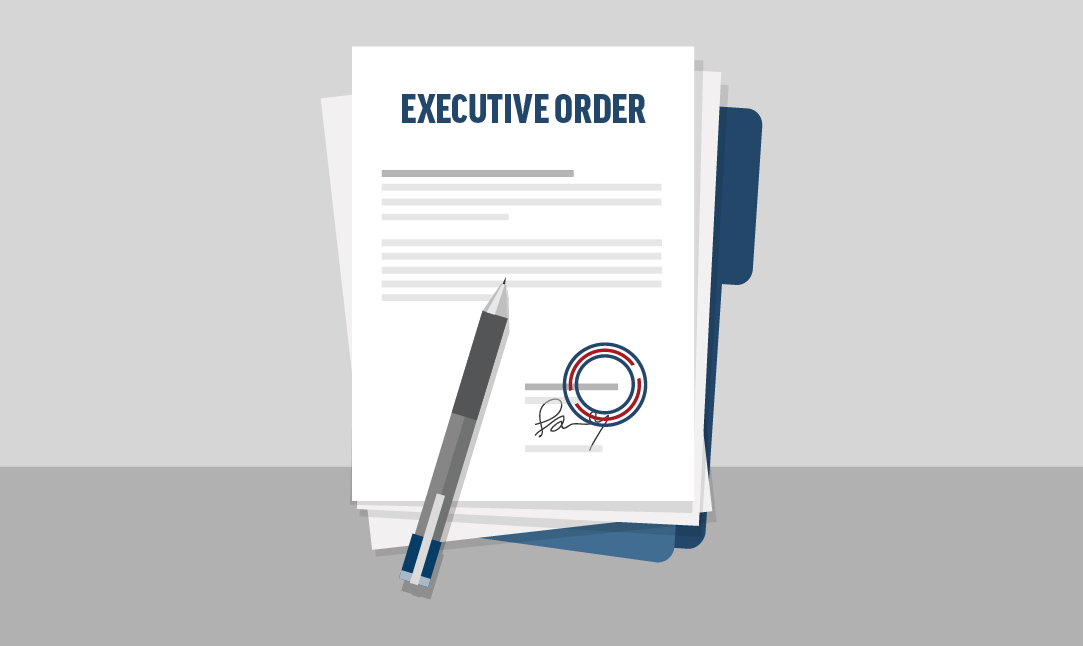
|
|
|
|
On June 27, 2019, President Donald Trump signed an executive order aimed at improving price and quality transparency in health care. The order is intended to increase availability of health care price and quality information and protect patients from surprise medical bills. The order directs federal agencies to issue guidance in a number of areas regarding health care costs. Part of the order is intended to expand access to high-deductible health plans (HDHPs) and flexible spending accounts (FSAs) and to more broadly define eligible medical expenses under Internal Revenue Code (Code) Section 213(d).
The order includes directives that will affect certain health plans that are provided by employers. Specifically, within 120 days, the order directs the Treasury to issue guidance to expand access to HDHPs that can be used alongside a health savings account (HSA), and that cover low-cost preventive care, before the deductible, for medical care that helps maintain health status for individuals with chronic conditions. In addition, the order directs the Treasury to propose regulations within 180 days to:
- Treat expenses related to certain types of arrangements - potentially including direct primary care arrangements and health care sharing ministries - as eligible medical expenses; and
- Increase the amount of funds that can carry over without penalty at the end of the year for FSAs.
Action Steps - An executive order is a broad policy directive used to establish how laws will be enforced by the administration. The order does not make any changes to existing regulations, but directs federal agencies to issue new guidance to implement the order’s policies. As a result, the executive order’s specific impact will remain largely unclear until agencies can issue further guidance. We will continue to monitor the matter and communicate any updates as they become available.
|
|
|
|
|
|
|
| NEW OSHA TRAINING FOR TRADE SHOWS |
|
|
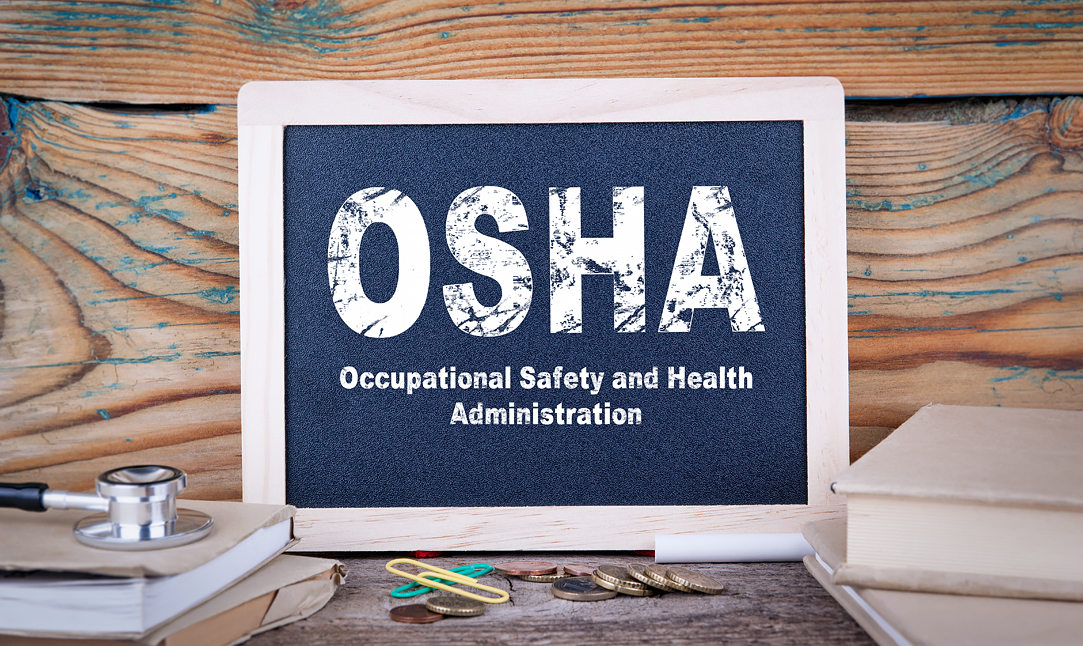
|
|
|
Nevada Governor Steve Sisolak recently signed Senate Bill 119 into law expanding the mandatory OSHA-10 and OSHA-30 training to include employees performing “convention services work” at sites where conventions and trade shows occur.
The new law will require:
- supervisory employees working at such sites to complete a specified 30-hour health and safety course not later than 15 days after being hired; and
- certain other workers working at such a site to complete a specified 10-hour course not later than 15 days after being hired. Section 7 of this bill defines “worker” to include only those persons whose primary occupation is to perform convention services work at such a site, which includes constructing, installing, maintaining, operating or removing trade show or exhibition displays, loading or unloading equipment and materials, erecting or dismantling booths and structures, rigging display areas, and installing temporary electrical power for use in display areas.
Although the majority of the Bill’s requirements take effect January 1, 2020, the deadline to comply with certain training components is January 1, 2021.
|
|
|
|
|
|
|
|
| STATE REGULATORY UPDATES |
|
|
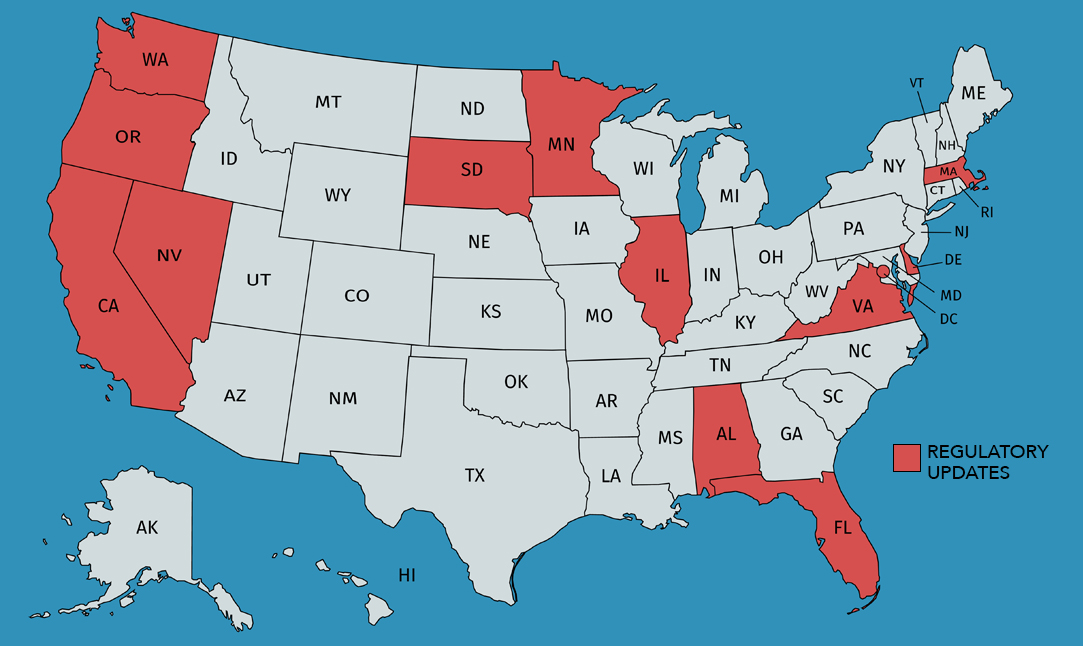
|
|
|
|
ILLINOIS
Illinois Legalizes Recreational Marijuana Use
Effective January 1, 2020, the Cannabis Regulation and Tax Act will allow anyone 21 or older to possess, use, or buy marijuana for recreational purposes.
The act contains a number of provisions that employers who wish to maintain drug-free workplaces may find helpful. The act specifically provides that:
- Nothing in the act prohibits an employer from adopting a reasonable zero-tolerance or drug-free workplace policy or employment policy concerning drug testing, smoking, consumption, storage or use of cannabis in the workplace or while ‘on call’ provided that the policy is applied in a nondiscriminatory manner.
- Nothing in the act requires an employer to allow an employee to be under the influence or use cannabis at work, while performing job duties, or while ‘on call’.
- Nothing in the act shall limit or prevent an employer from disciplining or terminating an employee for violating the employer’s employment policies or workplace drug policy.
Additionally, because drug tests generally cannot detect current marijuana impairment, employers will be prohibited by the Illinois Right to Privacy Act from taking adverse actions for positive marijuana drug test results in most situations except for reasonable suspicion. For a pre-employment drug test, the marijuana use always will be off-duty and off-premises, and therefore employers are prohibited from taking adverse actions against applicants who use marijuana. Illinois employers should review their drug-testing policies and practices, and consult with counsel to ensure compliance.
Continue reading for more on Illinois and the full list of states with regulatory changes (Alabama, California, Delaware, Florida, Illinois, Massachusetts, Minnesota, Nevada, Oregon, South Dakota, Virginia, Washington, and Washington D.C.).
|
|
|
|
|
|
|
|
|





